Photobiomodulation suppresses JNK3 by activation of ERK/MKP7 to attenuate AMPA receptor endocytosis in Alzheimer's disease
- PMID: 33336891
- PMCID: PMC7811840
- DOI: 10.1111/acel.13289
Photobiomodulation suppresses JNK3 by activation of ERK/MKP7 to attenuate AMPA receptor endocytosis in Alzheimer's disease
Abstract
Alzheimer's disease (AD), a severe age-related neurodegenerative disorder, lacks effective therapeutic methods at present. Physical approaches such as gamma frequency light flicker that can effectively reduce amyloid load have been reported recently. Our previous research showed that a physical method named photobiomodulation (PBM) therapy rescues Aβ-induced dendritic atrophy in vitro. However, it remains to be further investigated the mechanism by which PBM affects AD-related multiple pathological features to improve learning and memory deficits. Here, we found that PBM attenuated Aβ-induced synaptic dysfunction and neuronal death through MKP7-dependent suppression of JNK3, a brain-specific JNK isoform related to neurodegeneration. The results showed PBM-attenuated amyloid load, AMPA receptor endocytosis, dendrite injury, and inflammatory responses, thereby rescuing memory deficits in APP/PS1 mice. We noted JNK3 phosphorylation was dramatically decreased after PBM treatment in vivo and in vitro. Mechanistically, PBM activated ERK, which subsequently phosphorylated and stabilized MKP7, resulting in JNK3 inactivation. Furthermore, activation of ERK/MKP7 signaling by PBM increased the level of AMPA receptor subunit GluR 1 phosphorylation and attenuated AMPA receptor endocytosis in an AD pathological model. Collectively, these data demonstrated that PBM has potential therapeutic value in reducing multiple pathological features associated with AD, which is achieved by regulating JNK3, thus providing a noninvasive, and drug-free therapeutic strategy to impede AD progression.
Keywords: AMPA receptor endocytosis; Alzheimer's disease; JNK3; Photobiomodulation therapy; synaptic dysfunction.
© 2020 The Authors. Aging Cell published by Anatomical Society and John Wiley & Sons Ltd.
Conflict of interest statement
The authors declare that they have no conflict of interest.
Figures
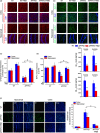
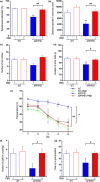
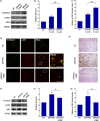
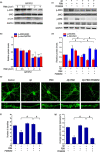
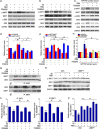
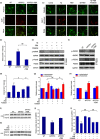
Similar articles
-
Photobiomodulation in experimental models of Alzheimer's disease: state-of-the-art and translational perspectives.Alzheimers Res Ther. 2024 May 21;16(1):114. doi: 10.1186/s13195-024-01484-x. Alzheimers Res Ther. 2024. PMID: 38773642 Free PMC article. Review.
-
MiR-335-5p Inhibits β-Amyloid (Aβ) Accumulation to Attenuate Cognitive Deficits Through Targeting c-jun-N-terminal Kinase 3 in Alzheimer's Disease.Curr Neurovasc Res. 2020;17(1):93-101. doi: 10.2174/1567202617666200128141938. Curr Neurovasc Res. 2020. PMID: 32003672
-
TRPV1 activation alleviates cognitive and synaptic plasticity impairments through inhibiting AMPAR endocytosis in APP23/PS45 mouse model of Alzheimer's disease.Aging Cell. 2020 Mar;19(3):e13113. doi: 10.1111/acel.13113. Epub 2020 Feb 14. Aging Cell. 2020. PMID: 32061032 Free PMC article.
-
TrkB activation by 7, 8-dihydroxyflavone increases synapse AMPA subunits and ameliorates spatial memory deficits in a mouse model of Alzheimer's disease.J Neurochem. 2016 Feb;136(3):620-36. doi: 10.1111/jnc.13432. Epub 2015 Dec 29. J Neurochem. 2016. PMID: 26577931
-
Treatment of Neurodegeneration: Integrating Photobiomodulation and Neurofeedback in Alzheimer's Dementia and Parkinson's: A Review.Photobiomodul Photomed Laser Surg. 2019 Oct;37(10):623-634. doi: 10.1089/photob.2019.4685. Photobiomodul Photomed Laser Surg. 2019. PMID: 31647776 Review.
Cited by
-
Photobiomodulation for Neurodegenerative Diseases: A Scoping Review.Int J Mol Sci. 2024 Jan 28;25(3):1625. doi: 10.3390/ijms25031625. Int J Mol Sci. 2024. PMID: 38338901 Free PMC article.
-
Transcranial photobiomodulation for brain diseases: review of animal and human studies including mechanisms and emerging trends.Neurophotonics. 2024 Jan;11(1):010601. doi: 10.1117/1.NPh.11.1.010601. Epub 2024 Feb 5. Neurophotonics. 2024. PMID: 38317779 Free PMC article. Review.
-
Photostimulation of lymphatic clearance of β-amyloid from mouse brain: a new strategy for the therapy of Alzheimer's disease.Front Optoelectron. 2023 Dec 14;16(1):45. doi: 10.1007/s12200-023-00099-8. Front Optoelectron. 2023. PMID: 38095816 Free PMC article.
-
Photobiomodulation in experimental models of Alzheimer's disease: state-of-the-art and translational perspectives.Alzheimers Res Ther. 2024 May 21;16(1):114. doi: 10.1186/s13195-024-01484-x. Alzheimers Res Ther. 2024. PMID: 38773642 Free PMC article. Review.
-
Transcranial near-infrared light in treatment of neurodegenerative diseases.Front Pharmacol. 2022 Aug 8;13:965788. doi: 10.3389/fphar.2022.965788. eCollection 2022. Front Pharmacol. 2022. PMID: 36034819 Free PMC article. Review.
References
-
- Antoniou, X. , Falconi, M. , Marino, D. D. , & Borsello, T. (2011). JNK3 as a therapeutic target for neurodegenerative diseases. Journal of Alzheimers Disease, 24, 633–642. - PubMed
-
- Arany, P. R. , Cho, A. , Hunt, T. D. , Sidhu, G. , Shin, K. , Hahm, E. , Huang, G. X. , Weaver, J. , Chen, A.‐ C.‐H. , Padwa, B. L. , Hamblin, M. R. , Barcellos‐Hoff, M. H. , Kulkarni, A. B. , & Mooney, D. (2014). Photoactivation of Endogenous Latent Transforming Growth Factor‐β1 Directs Dental Stem Cell Differentiation for Regeneration. Science Translational Medicine, 6, 238ra269. - PMC - PubMed
Publication types
MeSH terms
Substances
LinkOut - more resources
Full Text Sources
Medical
Molecular Biology Databases
Research Materials
Miscellaneous

